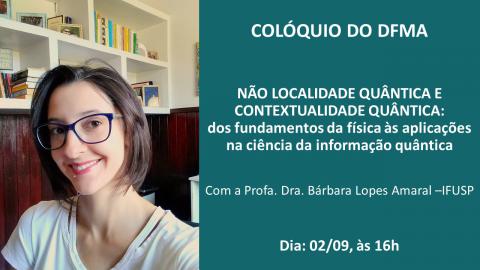Computação quântica e tecnologias quânticas emergentes



Resumo: The 2010s have been marked by two fundamental discoveries: the detection of the Higgs boson in 2012 and the first direct detection of Gravitational Waves in 2015. On one hand, the discovery of the Higgs boson has exacerbated the so-called Hierarchy problem (i.e. the mystery of why the Higgs boson mass is so light); on the other hand, the detection of gravitational waves has opened up the possibility of probing the physics of the early universe in previously unaccessible regimes. Interestingly, these regimes can host physics related to the hierarchy problem. In the first part of the talk, I will review the physics of gravitational waves and the hierarchy problem. I will then explain possible connections between the two, and how gravitational waves can be studied to get informations about the hierarchy problem.
Transmissão com acesso livre via plataforma zoom (https://zoom.us/j/996276017).


Além do importante papel da não localidade e da contextualidade nos fundamentos da teoria quântica, essas propriedades intrinsecamente quânticas foram identificadas como recursos para vantagem em diferentes tarefas. Portanto, é de fundamental importância estudá-las do ponto de vista das teorias de recursos, que fornecem uma estrutura poderosa para o tratamento formal de uma propriedade como um recurso operacional. Nesta contribuição, revisamos os desenvolvimentos recentes em direção a uma teoria de recursos unificada de não localidade e contextualidade e conexões com aplicações operacionais dessas propriedades.
Transmissão com acesso livre via plataforma zoom (https://zoom.us/j/996276017)

Este seminário apresenta os esforços do Observatório COVID-19 BR durante a atual pandemia. Aborda-se a questão de quais dados usar na descrição da epidemia, seu tratamento estatístico e a construção de modelos matemáticos para criar cenários futuros. Discute-se, ao fim, como o poder público usa dados e análises nas tomadas de decisões.
Transmissão com acesso livre via plataforma zoom (https://zoom.us/j/996276017)
I discuss a combined explanation of charged- and neutral-current
B-physics anomalies which assume the presence of a light sterile neutrino
state. Two simplified scenario are considered: a scalar and a vector
leptoquark model. While at present both models are compatible with direct
LHC searches and low-energy flavor measurements, already with 300/fb of
data the LHC will be able to completely test parameter space.
I will then discuss the cosmological constraints on the sterile neutrino
state and the conditions under which it can be a Dark Matter candidate.
Local: Sala Jayme Tiomno
Even though the LHC searches so far did not unveil the new physics particles, observations made at the LHC and at the B-factories point towards lepton flavor universality violation in both tree-level and loop-induced B-meson semileptonic decays. If confirmed with future data, these would be an unambiguous manifestation of new physics at colliders. After a brief review of the current status of these anomalies, I will discuss general implications that can be derived by using (i) an effective field theory approach and (ii) specific leptoquark models.
Local: Sala Jayme Tiomno